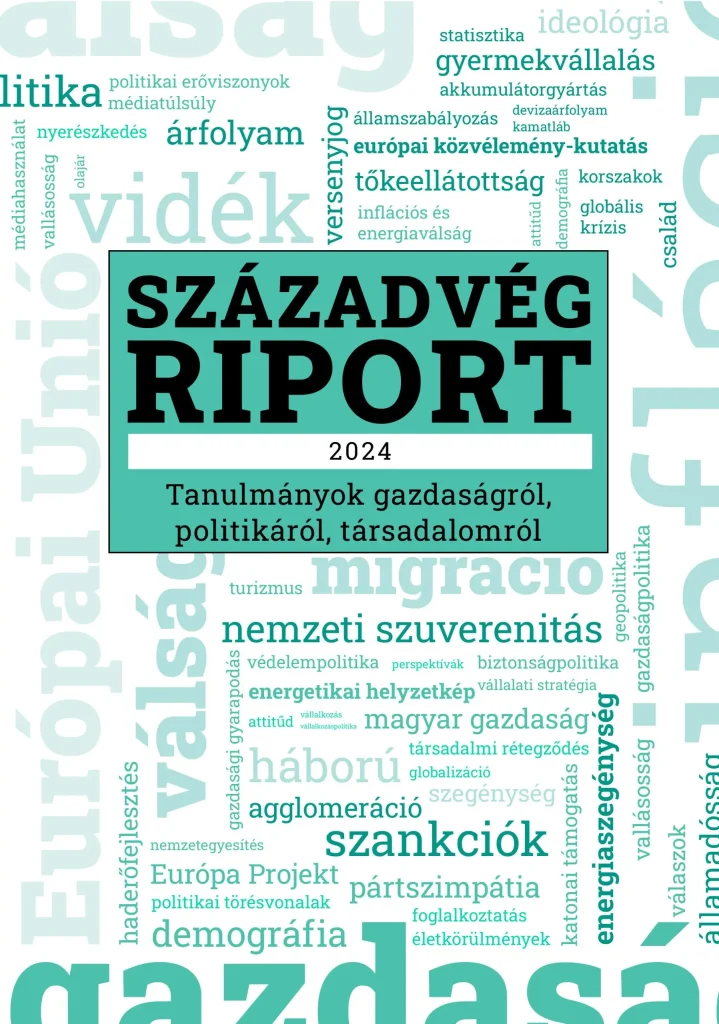Several factors may affect Hungarian economic performance in the coming period. Looking abroad, we expect economic expansion in the euro area and for our main trading partners, which should support sustained high growth rates in Hungarian exports. We expect continued disinflation in the euro area, which could bring down external inflationary pressures on the Hungarian economy. Continued falling of both transport costs and energy prices are among the other factors that could support the moderation of inflation in Hungary. In addition to the positive effects of these factors, the uncertainty caused by the Russia-Ukraine war should be mentioned as a negative factor.
Looking at Hungarian inflation trends, consumer prices increased by 14.6% last year. Inflation peaked at the beginning of this year, so the recent months have seen a steady decline in the year-on-year inflation rate. It is also important to note that the month-on-month indices have sometimes still been higher than the inflation rate regarded as tolerable by the central bank. Taking Hungarian disinflation into account, we estimate inflation to be 17.8% in 2023, 5.5% in 2024 and 3.7% in 2025.
With inflation starting to moderate, the Magyar Nemzeti Bank has committed to lowering the policy rate, so that the policy rate may converge to the central bank base rate in September 2023. Looking ahead, we expect monetary policy to gradually ease and the base rate to return to the central bank’s target range of 3±1% in 2025.
The 0.3% contraction in economic output expected this year is mainly attributable to a contraction in domestic demand. However, net exports continue to support economic growth. Household final consumption expenditure fell in the first half of the year, reflecting a decline in real earnings. Among available data, confidence indicators showed an upturn in consumer confidence, although year-on-year retail sales did not yet show an increase. We expect consumption to pick up towards the end of the year; year on year, however, it could still be 1.5% lower than in 2022. Consumption could rise by 1.8% in 2024 and 2.5% in 2025.
The high Hungarian interest rate environment, earlier profit losses due to higher production costs and the lack of EU funding may have also contributed to the decline in investments in the first half of the year. This year’s policy rate cuts may help corporate borrowing, but interest rates remain high. We estimate that investments might have fallen further in Q2 2023, implying an annual decline of 10.1%.
We expect investments to rise next year as EU funding arrives, interest rate conditions ease and production costs fall.
Additionally, a strong base effect could also appear in the annual investment rate, which we estimate at 8.1% in 2024 and 3.1% in 2025. We expect government spending to follow a trend, increasing by 1.9% in 2023, 2.2% in 2024 and 2% in 2025 on an annual basis.
After examining the revenue and expenditure projections in the 2023 budget and their expected annual outturns, our forecast projects an ESA deficit of 5.2%, 1.3 percentage points higher than the 3.9% of GDP deficit projected. We expect the cash deficit to be more favourable at 4.9%. If the government takes corrective fiscal measures in the coming months, the general government deficit could be lower than our current forecast. The government forecasts the gross public debt-to-GDP ratio to fall to 69.7% by the end of the year, while we currently expect the government debt-to-GDP ratio to be higher at 70.8% by the end of the year.
In the first half of 2023, Hungary’s exports showed strong fluctuations, but we expect exports to grow strongly for the rest of the year. As a result, exports could grow by 3.7% in 2023, followed by 2.6% and 6.4% in the subsequent years, thanks to the expansion of our export partners and the closing output gap in the euro area. Imports are mainly shaped by domestic demand, so we expect imports to fall by 0.2%, in line with falling consumption. In the coming years, imports are expected to grow more dynamically, by 4.1% in 2024 and 6.2% in 2025, as consumption and exports pick up. Over the forecast horizon, we expect an overall positive contribution to net export output.
| 2022 | 2023 | 2024 | 2025 | |
| Gross domestic product (volume index) | 4.6 | -0.3 | 2.5 | 2.8 |
| Household final consumption expenditure (volume index) | 6.3 | -1.5 | 1.8 | 2.5 |
| Gross fixed capital formation (volume index) | 2.2 | -10.1 | 8.1 | 3.1 |
| Export volume index (based on national accounts) | 11.8 | 3.7 | 2.6 | 6.4 |
| Import volume index (based on national accounts) | 11.1 | -0.2 | 4.1 | 6.2 |
| Balance of international trade in goods (EUR billion) | -14.9 | -11.0 | -13.4 | -13.6 |
| Consumer price index (%) | 14.6 | 17.8 | 5.5 | 3.7 |
| Central bank base interest rate at the end of the period (%) | 13.0 | 11.0 | 7.3 | 6.0 |
| Unemployment rate (%) | 3.6 | 3.8 | 3.5 | 2.8 |
| Current account balance as a percentage of GDP | -8.1 | -5.2 | -6.6 | -6.7 |
| Net lending as a percentage of the GDP | -6.0 | -3.1 | -4.5 | -4.6 |
| ESA balance of public finances as a percentage of GDP | 6.2 | 5.2 | 3.7 | 1.6 |
| Government debt-to-GDP ratio | 73.3 | 70.8 | 70.4 | 68.9 |
